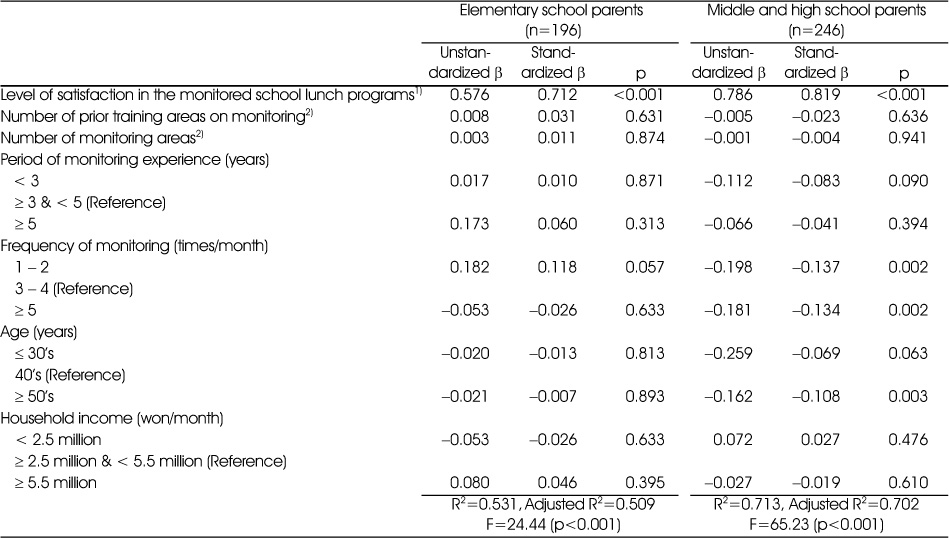Current Status of Parents' Monitoring of and Level of Trust in School Lunch Programs
Article information
Abstract
Objectives
The purpose of this study was to investigate the current status of parents' monitoring of school lunch programs and to examine the relationship of parents' school lunch monitoring with their level of trust in school lunch programs.
Methods
During November 2016, a web survey was conducted with 1,283 parents who had participated in monitoring of school lunch programs. A total of 621 parents completed the questionnaires (48.4% response rate) and the responses from 442 parents were analyzed (34.5% analysis rate) for elementary (n=196) and middle/high school parents (n=246), respectively.
Results
Both the elementary and middle/high school parents most wanted to participate in monitoring 1~2 times per month, which was less frequent than their current practice. They showed the highest experience rate in ‘food sanitation’ area in both the prior training and actual practice of school lunch monitoring. They most responded ‘increasing trust in school lunch programs’ as a merit and ‘lack of parents participating in monitoring’ as a problem of school lunch monitoring. The average levels of trust did not differ between elementary and middle/high school parents. Multiple regression analyses showed that elementary school parents' level of satisfaction in the monitored school lunch programs was positively associated with the parents' level of trust in general school lunch programs. Monitoring frequency and parents' age, in addition to level of satisfaction in the monitored school lunch program, were associated with level of trust in general school lunch programs among middle/high school parents.
Conclusions
There was room for change in parents' school lunch monitoring programs to meet parents' needs better. Well-managed school lunch monitoring programs contributing to parents' satisfaction with school lunch programs could increase parents' level of trust in school lunch programs.









